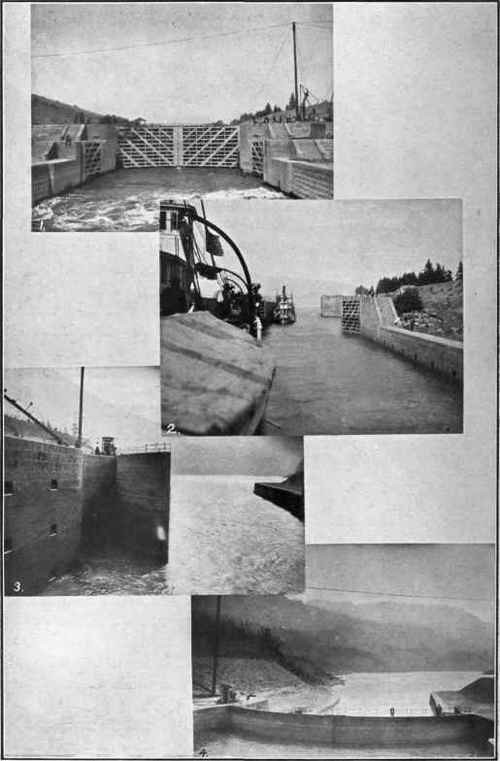Excursions, Conventions And Prominent Individuals. Part 3
Description
This section is from the book "Complete Self-Instructing Library Of Practical Photography", by J. B. Schriever. Also available from Amazon: Complete Self-Instructing Library Of Practical Photography.
Excursions, Conventions And Prominent Individuals. Part 3
499. Catastrophes
Catastrophes. Railroad wrecks, floods, fires, earthquakes, and all similar catastrophes, due, to a greater or less extent, to the uncontrollable elements, make good subject material for the press photographer. The California Earthquake, which aroused such national interest, on the 18th of April, 1906, followed by the great San Francisco Fire, brought into the hands of many photographers a small mint of cash returns.
500. A few examples are shown in Illustration No. 96, the upper three of which were taken within an hour after the earthquake, and show the effects of the catastrophe on some of the costly buildings at Stanford University, which institution is located on the Peninsula, thirty-four miles south of San Francisco. These pictures, together with many others of a similar character, were immediately forwarded to eastern publications, as well as the coast daily papers, and the photographer received an excellent reward for his promptness in getting out the prints and placing them in the hands of the various editors.
501. The three lower reproductions in Illustration No. 96 are of scenes in San Francisco, photographed ten days after the earthquake, and show the deplorable conditions which existed there at that time. The middle print shows the ruins of the City Hall; the lower left-hand print shows a view from Russian Hill looking toward the business center of the city; while the right-hand picture is a view on Market Street, which gives an idea of the appearance of what was formerly the main business portion of the city. All of the buildings were completely gutted by the fire, which burned this entire district.
502. Conflagrations
Conflagrations. In making photographs of fires, especially for newspaper reproduction, one must aim to secure the view which will show to best advantage the magnitude of the fire; in fact, the incidents connected with the fighting of the flames, the crowds collecting on the streets, and, in general, showing the excitement usually witnessed on such occasions. This would include the burning building and its surroundings, the fire-engines, the men at work and the on-lookers, etc. The lower reproduction in Illustration No. 97 shows the kind of a photograph that is desired. Compare this picture with the upper one, which is a closer view of the same building taken within a few moments of the former. In the one we have no appearance of life or excitement, the picture appearing dull and uninteresting, while in the other we show action and excitement, giving a general idea of the scene during the actual occurrence.
503. The negative should be developed at once and gaslight prints made and sent to the various papers, which will be printing extras regarding the fire within a short time after it starts. If the photographer works quickly he should have finished prints to deliver to the various publications within 20 minutes after having made the exposure. It is these prints that will be accepted. The person who procrastinates will never make a success at press photography. It is the alert and ambitious worker who wins.

Illustration No. 97
Conflagrations See Paragraph 502

Photos by A. S. Dudley
Illustration No. 98
Engineering Construction - Columbia River Canal
See Paragraph 504
Continue to:


